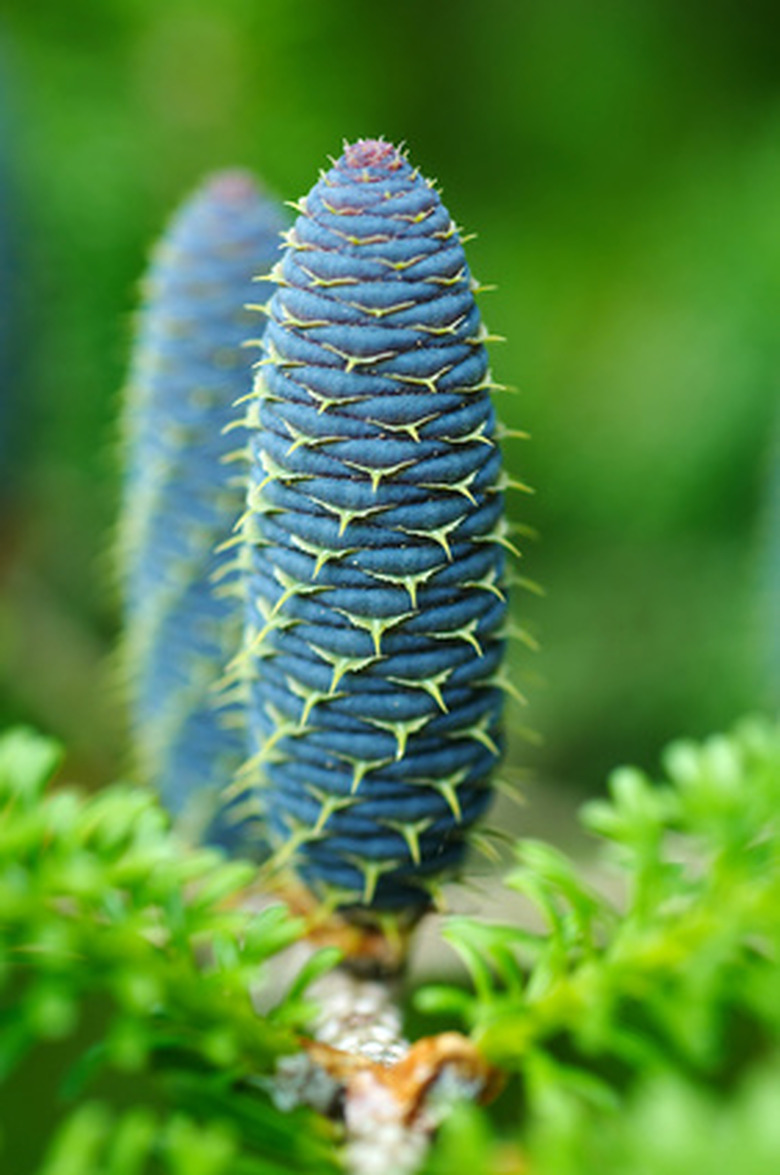Leyland Cypress Alternatives
Leyland cypress is an evergreen tree with an upright, pyramidal shape and blue to green needles. Growing 60 to 90 feet tall and 12 to 15 feet wide, Leyland cypress trees are easy to transplant and help to create an ideal screening plant among the landscape. They require full sun and well-drained soil to thrive. Alternatives to Leyland cypress possess the height and fullness, as well as the ability to retain their needles year-round.
Giant Arborvitae
Giant arborvitae (Thuja plicata) is an evergreen with a rapid growth rate and fine texture, similar to Leyland cypress. Growing 50 to 80 feet tall and 15 to 20 feet wide, giant arborvitae has pyramidal shape that is narrow to broad. The foliage on giant arborvitae is deep green with white markings on the underneath side. Keeping its foliage color in winter, giant arborvitae creates a commanding presence to the landscape. The bark on giant arborvitae is a red to cinnamon color when young. A long-living tree, it casts dense shade to the garden below and, like Leyland cypress, is salt-tolerant. Giant arborvitae requires full sun to part shade and well-drained, moist soil. Plant giant arborvitae in U.S. Department of Agriculture Hardiness Zones 5 to 8.
- Leyland cypress is an evergreen tree with an upright, pyramidal shape and blue to green needles.
- Giant arborvitae (Thuja plicata) is an evergreen with a rapid growth rate and fine texture, similar to Leyland cypress.
Incense Cedar
Incense cedar (Calocedrus decurrens), a kind of evergreen tree, has a slow to moderate growth rate and upright, conical form with spreading branches, similar to Leyland cypress. Growing 30 to 70 feet tall and 10 to 20 feet wide, incense cedar has exfoliating gray to red brown bark. Versatile, incense cedar trees withstand heat and drought. The shiny dark green foliage also holds its color in winter for a showy garden display. Incense cedar requires full sun to light shade and moist, well-drained soil but tolerates a wide variety of soil types. Plant in USDA zones 5 to 8.
White Spruce
White spruce (Picea glauca) is an evergreen tree with a moderate growth rate and medium texture. Similar to Leyland cypress, the compact, pyramidal shade is dense with narrow, ascending branches. Growing 40 to 60 feet tall and 10 to 20 feet wide, white spruce trees are easy to transplant and withstand drought, cold and wind, creating a versatile evergreen tree. The four-sided pale green to medium green needles grow 1/2- to 3/4-inch long and the pale brown cones are 1 to 2 1/2 inches wide. White spruce trees grow best in full sun and moist, well-drained soil. Plant in USDA zones 2 to 6.
- Incense cedar (Calocedrus decurrens), a kind of evergreen tree, has a slow to moderate growth rate and upright, conical form with spreading branches, similar to Leyland cypress.
- Growing 30 to 70 feet tall and 10 to 20 feet wide, incense cedar has exfoliating gray to red brown bark.
